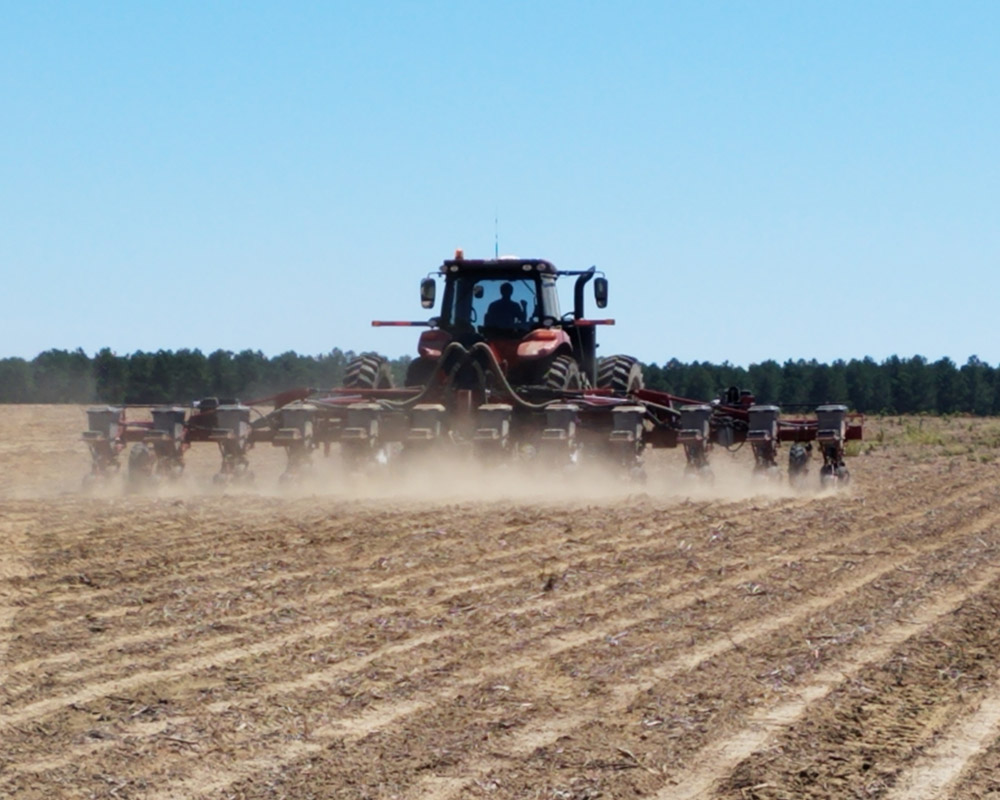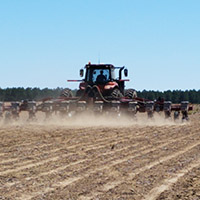Due to high consumer expectations, farmers and agricultural producers are constantly under pressure to deliver their products at higher yields for cheaper prices. This may seem like an impossible combination of demands, but University of Georgia Cooperative Extension researchers are developing precision agriculture methods to make the planting process more efficient for farmers while protecting profits.
A recently published article in the journal Precision Agriculture revealed the importance of planter downforce and the impact that it, along with other precision technology, can have on harvest yields. Downforce is the pressure that farmers apply to their row unit to ensure that it's maintaining the depth at which the planter is set. The study was led by Simerjeet Virk and Wesley Porter, faculty in the College of Agricultural and Environmental Sciences’ Department of Crop and Soil Sciences on the UGA Tifton campus.
“In precision ag, we’re looking at a lot of different areas from the machinery perspective at the same time, but the end goal is the same — does this improve machinery performance and/or increase crop yield?” said Virk, assistant professor and Extension precision agriculture specialist.
Virk said that the primary purpose of precision agriculture is to measure the soil and crop variability within a field and determine how it may affect crop productivity in those areas. These spatial measurements are then used to determine the technology and application practices that can be used to better manage the measured variability, helping growers maximize efficiency.
Precision agriculture concepts are used at all stages of the growing season and include planting, fertilizing, spraying, crop monitoring and harvesting. In this study, researchers examined the effects of using planter downforce technology in cotton fields with varying soil textures in differing regions across south Georgia.
“This research has provided information for farmers to better understand where the downforce on their planter needs to be set to aid in maximizing crop emergence, ideally lowering the instances of needing to replant fields and increasing crop yield,” said Porter, associate professor and Extension precision agriculture and irrigation specialist, who served as lead principal investigator on the project. “If farmers know where to set their downforce, they will be able to better match seed placement to field conditions.”
Unlike mechanical downforce systems, the new active systems use hydraulic pressure to maintain a desired seeding depth, regardless of the variations in the soil across the field. This technology could improve planting efficiency by ensuring uniform seed placement, which leads to timely and uniform crop emergence and, in some cases, increased yields.
“We’re not just looking at how this technology can help us do a better job at planting. If a grower invests in (the technology), we want to know what sort of return on investment and what type of improvements the farmer can expect during planting by adopting the technology,” Virk said.
In addition to implementing new technology, precision agriculture specialists also work to increase the adoption and implementation of existing precision agriculture technologies. Virk said that farmers across the state have varying access to equipment with different capabilities. Large-scale producers often have access to the most technology, however small- and medium-sized operations usually explore all the available information, such as technology benefits and return on investment, to make technology-adoption decisions.
“My goal is not to increase technology adoption by pushing the technology to growers. It is to provide research-based information so the growers can maximize or optimize the use of whatever technology they currently have — whether it is the newest technology, little technology or none at all,” Virk said.
Virk’s Extension appointment allows him to educate producers and the public about precision agriculture developments that can help farmers strengthen their operations by speaking to classes, hosting field days, and attending county meetings to educate producers and the public about technological advancements in precision agriculture.
UGA precision agriculture researchers are constantly collecting and analyzing data to provide research-based recommendations to producers across the state.
“Whatever we learn from all these situations, we try to take that information and share it with growers so that they can make informed decisions for their operations that are practical and profitable,” Virk said.
Though research studies and the application of their results can often take years, the results of this study were immediately useful to Georgia’s farmers through Extension education.
“Research such as this provides farmers with an instantaneous return of knowledge about the implications of selecting the correct downforce for specific field conditions. Data from this research can be immediately applied to most planters and farms,” Porter said.
Funding for this study was provided by UGA Extension and the Georgia Cotton Commission.
For more information about the Department of Crop and Soil Sciences, visit cropsoil.uga.edu. To learn more about CAES research, visit caes.uga.edu/research.








